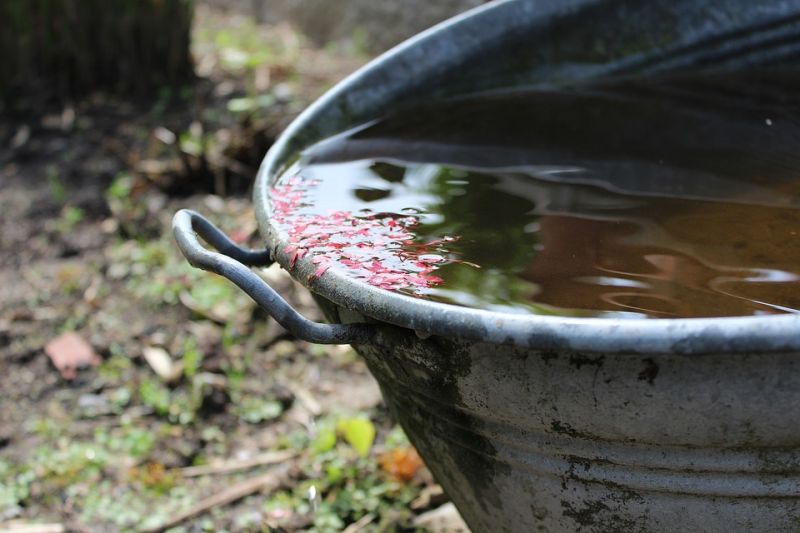Rainwater Harvesting for Assam Cities
Published on by Rituraj Phukan, Chief Operating Officer at Walk For Water in Technology
One of the most important technologies that is relevant to Assam, an Indian province with seasonal water scarcity and falling water tables despite abundant precipitation, is rainwater harvesting.
In cities like Guwahati, the main commercial centre of Assam, rainwater harvesting could provide the additional benefit of quickly draining areas prone to flooding after heavy downpours.  Many of the large and small cities get flooded after a few hours of precipitation as most wetlands, which were the natural sinks for drainage, have been filled-up for construction and development by short-sighted urban planners. The landscape is dotted with hills which have been encroached, leading to mushrooming of buildings where there were abundant forests. Most natural streams disappeared after the deforestation of the hills and the rainwater gushes down adding to the flooding problem. By construction of sink wells, rainwater can be used to recharge the underground aquifers in these cities that also face acute water shortage during the dry season.
Many of the large and small cities get flooded after a few hours of precipitation as most wetlands, which were the natural sinks for drainage, have been filled-up for construction and development by short-sighted urban planners. The landscape is dotted with hills which have been encroached, leading to mushrooming of buildings where there were abundant forests. Most natural streams disappeared after the deforestation of the hills and the rainwater gushes down adding to the flooding problem. By construction of sink wells, rainwater can be used to recharge the underground aquifers in these cities that also face acute water shortage during the dry season.
Utilizing existing technology for rainwater harvesting could be very useful for Assam because of abundant rainfall. It can be installed on rooftops of buildings in cities like Guwahati for recharge of aquifers and these would provide the residents with ample water supply during the dry season. Testimonials from cities like Pune, with widespread use of large-scale rainwater harvesting technologies, has indicated considerable monetary savings for residents within a year after installation of the systems as they did not have to buy water from tankers. This also translates to considerable savings in carbon emissions from the constant plying of water tankers from distant areas to the cities as well as better trafiic management.
Another benefit of rainwater harvesting is that the catchment, conveyance and storage can be suitably modified to the needs of the area. So both paved and unpaved surfaces as well as rooftops can be used as catchment and simple pipes or existing drainage used for conveyance to underground storage tanks, recharge aquifers or natural sinks like ponds for storage. This flexibility makes it suitable for the different terrain and landscape of the cities and towns of Assam.
Media
Taxonomy
- Rainwater Harvesting
- Public Health
- Technology
- Environment
- Water Supply
- Water Management
- Infrastructure
- Hydrology
- Water Management
1 Comment
-
I
I have designed a fluid retention device which can be used for large holding tanks, flood defence, land retention, aqueducts.
The system which we have designed is totally concrete free, can be installed on any terrain above ground, faster to install and requires minimal skill and machinery/plant.
> Benefits of using Neptune's products
> No Concrete required - Up to 40% cheaper than concrete
> Situated above ground for easy access
> Fast installation
> Low maintenance
> Minimal ground preparation
> Environmentally friendly 95% recyclable.
> We use recycled products where possible.
> Will last over 75 years
> Cladding can be installed
Best regards,
Mike Mulvihill
> Founder chief engineer
> Neptune Solutions Global Ltd
>http://www.neptunesolutions.co.uk
> Landline 0161 850 1608
> Mobile: 0754 109 2111
> Other Links
> LinkedIn : https://www.linkedin.com/in/michael-mulvihill-72985097/
>
Twitter : https://twitter.com/MichaelMulvihi2?lang=en-gb
>Facebook : https://www.facebook.com/Neptunesolutions.co.uk/
Google+ : https://plus.google.com/u/0/114129761728639292892
YouTube Channels
: https://www.youtube.com/playlist?list=PL1VyNCP16NIkfVMNHjHdBhIdKzoUxDSGr
: https://www.youtube.com/channel/UCfd6UTZwNJKSSk3vxJQ3x3w